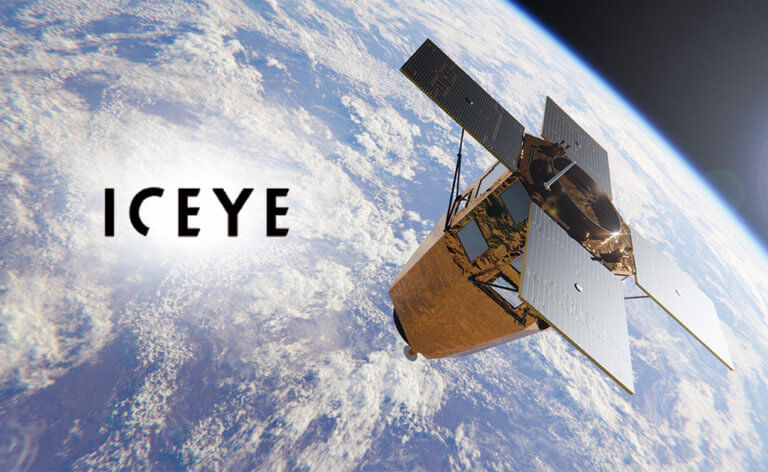SIRC: Satellite disaster management specialist seeks new heights in APAC after building Japan foundation
November 5 2025 by Joana Nguyen
Satellite disaster management specialist ICEYE is looking to expand its offerings to the wider Asia Pacific as its Japanese business continues to mature, said Kohei Watanabe, strategic account manager forAPAC.
“Japan was ICEYE’s first market in the APAC region for nat cat monitoring and flood solutions, due to our strategic partnership with Tokio Marine,” he said.
“Japan’s exposure to floods, typhoons, earthquakes, and tsunamis amplifies the importance of ICEYE’s capabilities. We’ve now matured our solutions for these perils and are expanding them across Asia.”
ICEYE’s flood solution in Japan is fully operational, while its earthquake product, developed in collaboration with local partners and piloted, will be launched in the country in 2026, according to Watanabe.
Besides, the company’s typhoon monitoring solution is active, and wildfire is being considered an additional peril.
“Our multi-peril capability is now almost complete, and Japan serves as a foundation for our broader APAC strategy,” he said.
ICEYE launched its Japan business in 2024 and will be opening a local office in the near future, Watanabe added
Moreover, besides supporting real-time claims response and helping insurers pay claims faster, ICEYE Japan is now expanding into areas like underwriting, exposure management, and improved flood modelling for internal and external reporting.
“Beyond Japan, we’ve operationalised flood monitoring in Taiwan, Thailand, and India and continue to expand across Asia,” he added.
“Our approach is methodical, and we choose countries based on data quality, market readiness, and the potential for high-impact use cases.”
‘Never existed before’
ICEYE owns and operates the world’s largest synthetic aperture radar (SAR) satellite constellation, delivering objective, near real-time insights, day or night, for critical perils such as flood, typhoon, and wildfire, said Watanabe.
The data that ICEYE delivers is at a speed and granularity that never existed before, creating a brand-new layer of information that insurers can use to enhance actuarial peril modelling, he added.
“Our insights are particularly useful in addressing secondary perils like floods and wildfires, where models can be coarse and outdated due to climate change and land use changes, e.g., urbanisation and deforestation,” Watanabe said.
“Since 2021, we’ve analysed close to 400 catastrophe events globally. This gives us a growing historical archive of observed loss data that can enhance or validate model-based analysis.”
He added that historical data can be sparse or unreliable, especially in developing regions, where data from data-rich countries, like the US or parts of Europe, has often been extrapolated.

“We are also producing entirely new datasets for APAC. This not only means that insurers can effectively backfill historical catalogues, but this depth of insight can also help improve technical pricing and transform claims operations.”
Kohei Watanabe, ICEYE
“ICEYE’s global capability allows us to generate accurate, location-specific data for underserved regions, enabling solutions and response strategies to be developed based on actual historical data,” Watanabe said.
Another unique capability of ICEYE is its ability to proactively task satellites to take targeted images before and after an event, particularly for perils like typhoons, wildfires, and earthquakes, allowing for better understand of the extent of building damage and conduct real-time hazard analytics that were previously unavailable.
“We’ve also built a dedicated team of experts, including meteorologists, insurance specialists, and geospatial and catastrophe experts, who support the analysis of this data in real time and provide actionable insights for the insurance industry,” he added.
With labour shortages in areas like loss adjusting and disaster response worsening, ICEYE data reduces the need for boots-on-the-ground loss adjusters in inaccessible or high-volume events, Watanabe said.
“We are also producing entirely new datasets for APAC. This not only means that insurers can effectively backfill historical catalogues, but this depth of insight can also help improve technical pricing and transform claims operations,” he added.
“Further, our change detection capabilities enable a shift from hazard-based pricing to damage-based validation, which applies to both parametric and indemnity products. So, there are many opportunities for ICEYE to support ongoing advances in the insurance sector.”
-
Beazley | What does cyber protection look like from day 1 to day 600 and beyond?
Cybersecurity is no longer just an IT concern, but a governance issue that belongs on the boardroom agenda.
-
Sedgwick | Preparing for the next storm
Insurance industry needs to recalibrate, invest in innovation and strengthen systems, talent and data practices.
-
Peak Re | From climate modelling to market opportunity: Forging a new clarity on Southeast Asia’s climate risk
Southeast Asia's protection gap: a crisis of clarity, not just capital
-
BHSI WICare+ | Accelerating Payments, Empowering Recovery
Launched in cooperation with Steadfast’s Singapore network, WICare+ fills the gaps found in traditional coverage and keeps businesses and their workforce secure by covering up to SG$350,000 in medical expenses per claim.

